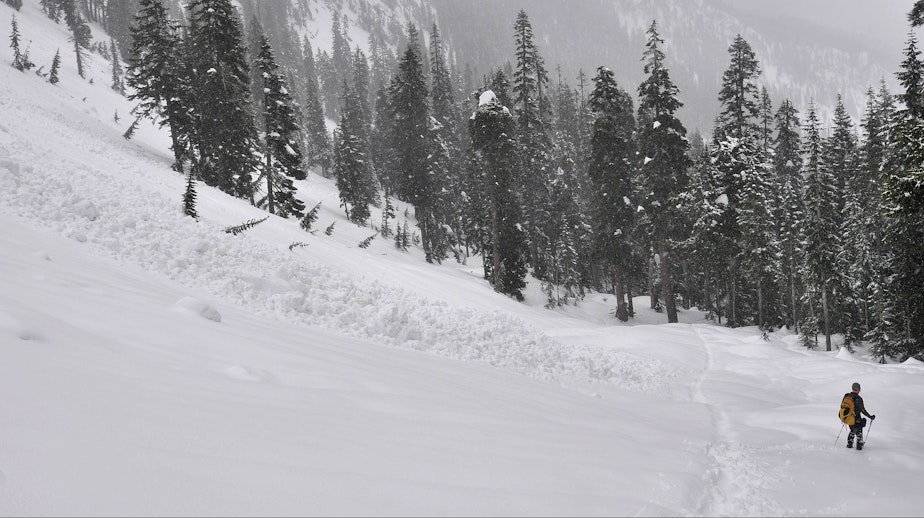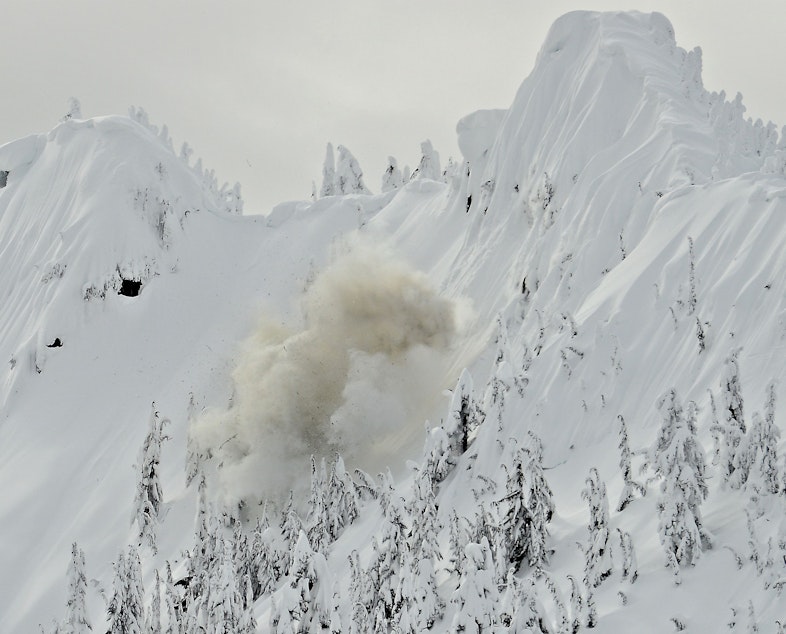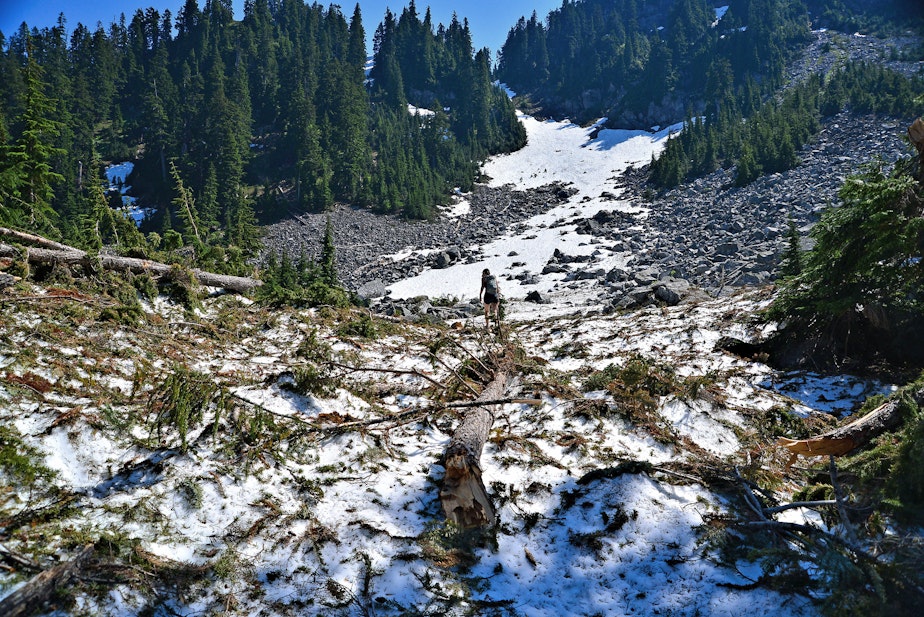Avalanches are a big danger here. Know before you go

A large crack ... a boom ... If you're hearing that in avalanche country, it's probably too late. You should have done your prep work well before that.
Nick Constantine with Seattle Mountain Rescue told KUOW's Angela King that Washington is one of the most dangerous areas for avalanches in the U.S.
He said his team responds to three or four avalanche-related accidents every year in King County.
He offered outdoor adventurers some pro tips for keeping safe in the snow.

Sponsored
1. Check the avalanche forecast before you go.
2. Take your cell phone with you.
3. Be properly equipped to go into the back country.
"The three tools that are commonly referred to as your lifeline tools for avalanche rescue and traveling in the back country in avalanche terrain are your beacon, probe, and shovel," Constantine said.
"There are some new tools that have come out over the past few years commonly called avalanche airbags. If you're caught in an avalanche, you can deploy a small rip cord that will inflate an airbag that's above your shoulders and somewhat around your head. And the goal of this, or the hope, is that it can help float you up on the snow pack as you're sliding down and allow you to stay up and above and not be buried deep in the snow."
4. Listen for a “whoomp” sound
Sponsored
"There's a misconception that you'll hear a large crack, or that you'll hear this large boom sometimes, like in the movies. Oftentimes, if you're hearing that, it's probably a bit too late and it is quite challenging to get out of the way of a slide. These slides are typically moving snow upwards of 80 plus miles an hour," Constantine said.
5. Work fast
"Time is obviously a huge factor. Trauma in an avalanche is probably the biggest concern," Constantine said.
"If you're lucky enough to survive that portion of things, then you are at risk of asphyxiation underneath the snow pack. That’s where time becomes critical for your small group to dig you back out."
Produced for the web by Kara McDermott.
Sponsored





